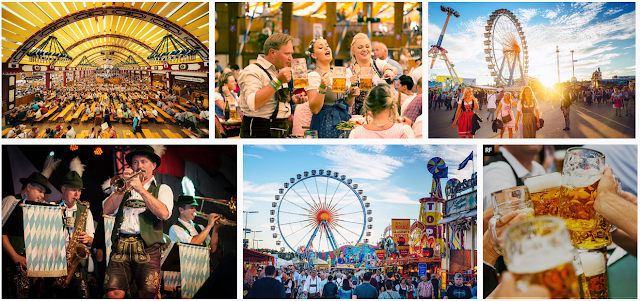Bauhaus Masters and their Marvelous Work
Bauhaus was a German art school that is influential even today. It was operational from 1919 to 1933 until the Nazis forced it to close down. Bauhaus design school combined crafts and fine arts seamlessly and was famous for its approach to design. Their principles are prominent till date and are taught in all the design schools across the globe. Their impact in graphic design was phenomenal and in fact, the first place dedicated to graphic designing.
The masters of Bauhaus
The Bauhaus Movement began in 1919 when its founder started a school with a vision to bridge art and industry by merging fine arts and crafts. The Bauhaus was founded in Weimer by Walter Gropius who was an architect. All arts including architecture was brought together in this school which had a profound influence on interior designing, typography, architecture, industrial design, and graphic design.
The school exists in three German cities, i.e., Weimer, Dessau, and Berlin. The Weimer school existed from 1919 to 1928, the Dessau school from 1928 to 1930, and the Berlin school from 1930 to 1933. All three Design Schools in Germany were run under three different architect-directors: Walter Gropius, Hannes Meyer, and Mies van der Rohe respectively. Bauhaus was closed in 1933 under the pressure of the Nazi pressure. But albeit its closure, the staff continued to spread the idealistic prospects of Bauhaus as they migrated all over the world. This Bauhaus style became the most crucial part of modernist architecture and design, architectural education and design.
Walter Gropius
 |
| Walter Gropius - Source:Dezeen.Com |
The Fagus Factory was the most popular artwork by Walter Gropius. He designed the façade of the factory where the floor to ceiling glass creates an illusion of light. The large rectangular panes that were punctuated by brickwork and steel mullions were rarely seen in building designs.
 |
| The Fagus Factory - Source: Wikipedia |
The corners give a reoccurring theme as the continuous glass joints at right tangles eliminated the distinction between the interior and exterior of the building. This is used in modernistic architecture. The use of glass in this German Design allowed the workers to get exposed to more light than being enclosed in brick factories.
Related Story: Maestros of Design
Hannes Meyer
 |
| Hannes Meyer, Source: Dezeen |
The Basel Petersschule is the most popular design of Hannes Meyer. The building is paired with the starting system of projecting platforms which gives an illusion of a floating platform. The plan also has glazed corridors and stairways. One can see such structured buildings used in modern architecture till date.
Mies van der Rohe
 |
| Mies van der Rohe Source: Dezeen |
Mies van der Rohe was a master of minimalism and is responsible for the dictum ‘less is more’. He sought to define modernists architectural style and pioneered the use of glass and steel in construction. The Barcelona Pavilion is one of his most famous works. The pavilion was used for the 19229 international expositions in Barcelona. The design reflected spectacular use of materials such as travertine, red onyx, and marble. Moreover, He specially designed the iconic Barcelona chair for this building.
Germany has given a lot to the world, be it German Fashion or German technologies. The contribution of the Bauhaus remains unchallenged even today, and the designs Made in Germany forms the base to every construction and design.







Bauhuas is of the best Design Schools in Germany. The approach towards design and its importance is taken very seriously in Bahaus School. Masters of this amazing place are also very commendable.
ReplyDelete